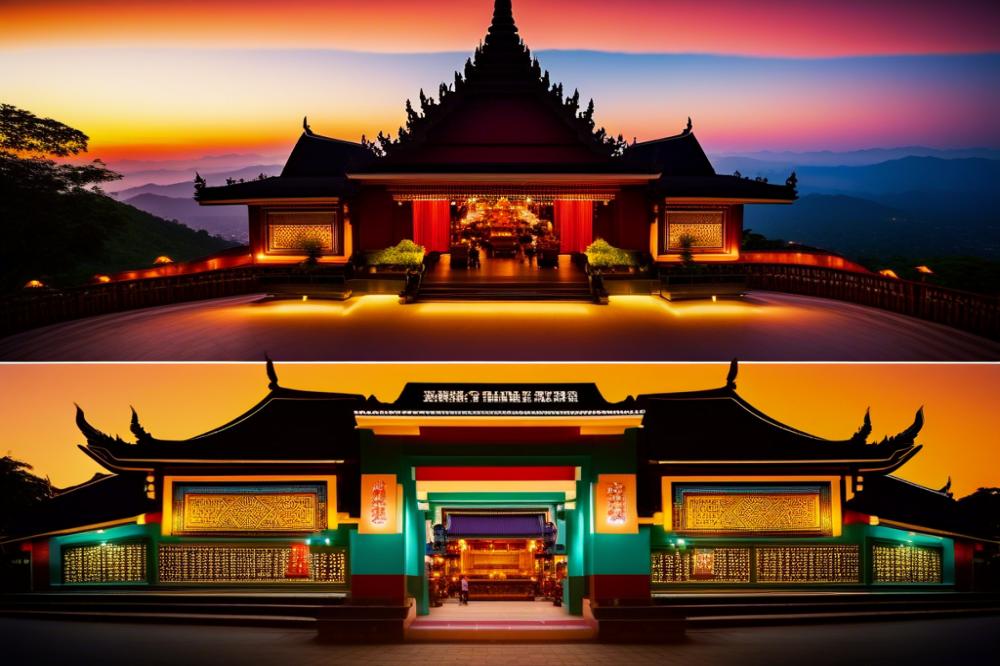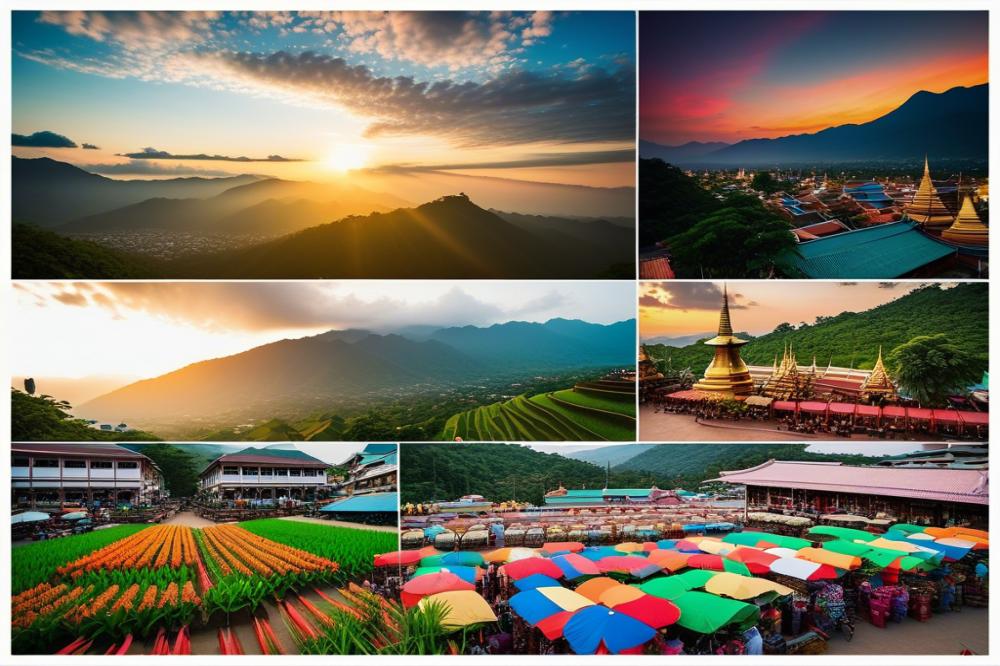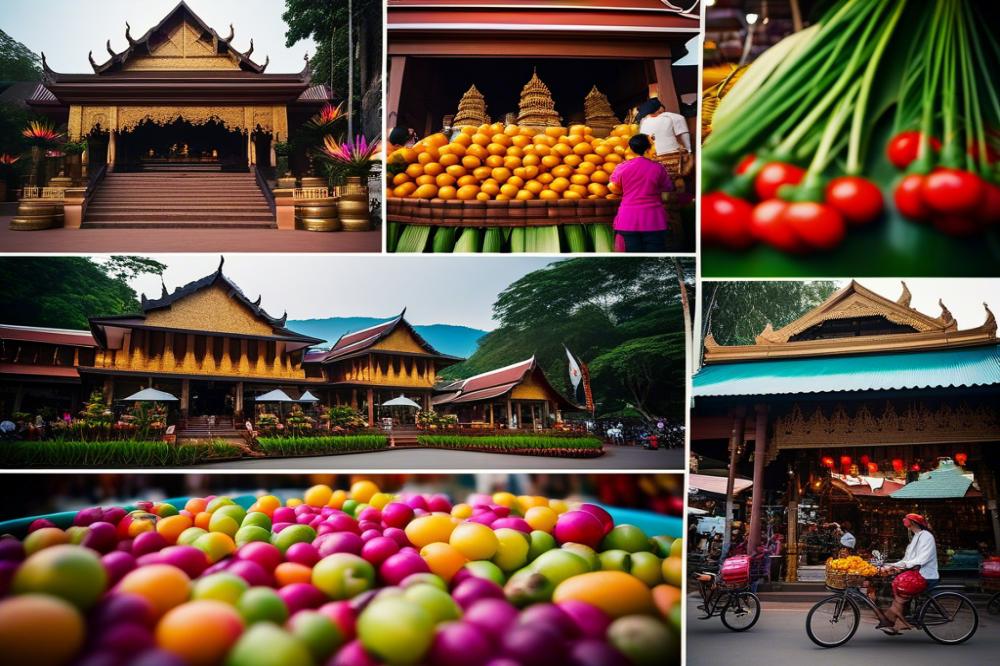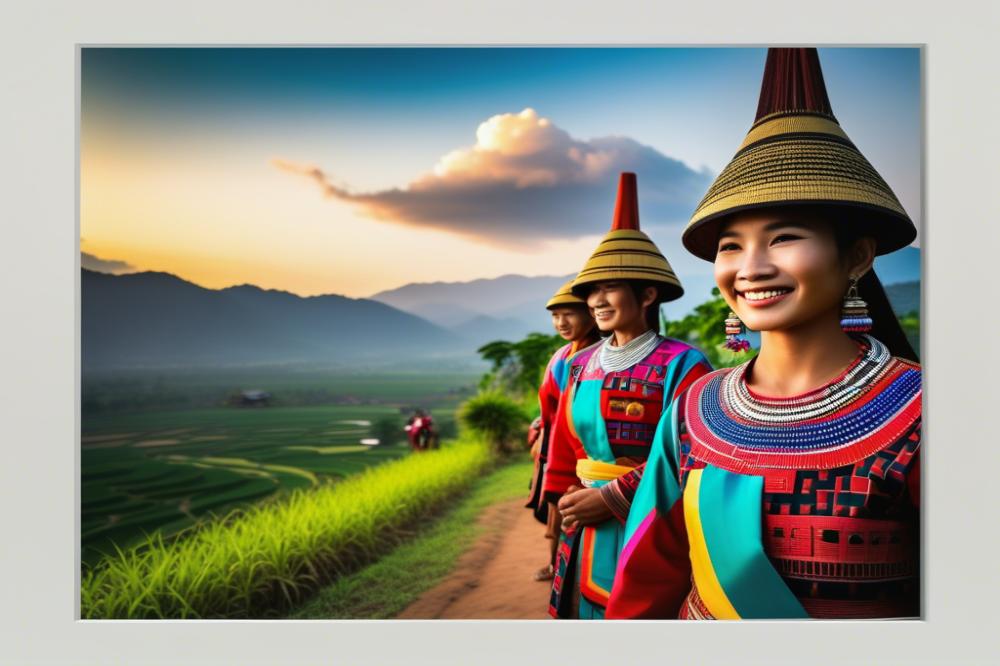Visiting Tribal Villages Around Chiang Mai
Chiang Mai serves as a vibrant hub for holiday adventures. Nestled in the mountains of Northern Thailand, it attracts travelers seeking diverse experiences. Visitors can explore lush landscapes, stunning temples, and bustling markets. An intriguing opportunity lies in the chance to visit local ethnic tribes.
Rural tourism is gaining popularity, especially as more people look for meaningful travel experiences. Exploring the cultures and customs of hill tribes offers a deep cultural experience unlike any other. When people engage with the local traditions, they gain insight into unique ways of life. These community visits foster respect and understanding of diverse backgrounds.
Adventure tourism thrives in this region, allowing explorers to embrace the natural beauty while interacting with indigenous cultures. Travel tips for the area suggest ways to respect customs and engage thoughtfully with residents. Sustainable travel practices are essential here, as they help preserve these communities and their heritage.
For those interested in connecting with the roots of Thailand, the experience is rewarding. Understanding the stories behind each tribe enriches one’s travels. A journey to the Tribal Villages reveals much about resilience and adaptability. Such visits not only contribute to personal growth but also support the communities in maintaining their traditions.
Tribal Villages Around Chiang Mai

Chiang Mai, nestled in the mountains of Northern Thailand, is home to fascinating ethnic tribes. Visitors often travel to the hills to meet the Karen, Hmong, Akha, and Lahu groups. Each tribe has its own distinct customs and traditions that are vibrant and worth exploring.
The Karen, often known as the “long-neck” people, have gained fame for their unique brass neck rings. These rings symbolize beauty and cultural identity. Many local women in this tribe wear them from a young age. This practice draws tourists eager for a cultural experience. However, it raises questions about the ethics of cultural tourism.
Hmong people are known for their colorful clothing and intricate embroidery. Their traditional garments are often adorned with stunning patterns. They celebrate various festivals throughout the year which showcase their rich culture. Visiting their villages allows travelers to learn about their agricultural practices and community life.
Members of the Akha tribe often wear striking headdresses made from silver and beads. These items reflect their social status and marital status. Community visits reveal their deep connection to spirituality and nature. The Akha also have unique practices related to their crops and local ecology, which highlight sustainable travel in this region.
Lahu people, on the other hand, have a reputation for their vibrant music and dance traditions. Their gatherings create a lively atmosphere, showcasing talents passed down through generations. Engaging with the Lahu can offer insights into their beliefs and way of life, making it a remarkable adventure tourism opportunity for those seeking authenticity.
Preserving local traditions is crucial for these tribes. As rural tourism grows, it can help sustain their livelihoods. However, it can also pose threats to their way of life and customs. Responsible travel choices are essential to support their communities without compromising their identity.
Travel tips for visiting these villages often emphasize respect and understanding. Visitors should learn about proper behavior and etiquette before going. Many tribes welcome visitors but expect an appreciation of their customs. Engaging with the local people can create lasting memories.
Cultural Experiences with Ethnic Tribes

Traveling to the hill tribes of Northern Thailand offers more than just scenic views. Engaging with these ethnic tribes allows visitors to immerse themselves in vibrant local traditions. Many communities welcome tourists, providing a platform for meaningful community visits. During these experiences, travelers can witness how daily life unfolds in these rural settings.
Crafts made by the local tribes are a highlight of any trip. Tourists often find themselves in workshops where artisans weave colorful textiles or create intricate jewelry. Learning about these traditions provides insight into their heritage. Furthermore, participants may get the chance to try their hand at these crafts, making it a hands-on cultural experience.
Traditional music and dance are also prominent aspects of tribal culture. Visitors might attend a performance showcasing age-old songs and dances, rich in storytelling and emotion. These acts reflect the uniqueness of each tribe’s history and beliefs. Spectators can dance alongside villagers, translating their appreciation into a shared moment of joy.
Respecting these communities is crucial while enjoying adventure tourism. Taking time to learn from indigenous peoples fosters understanding. Observing their way of life invites a deeper connection with the land and its stewards. Always remember to choose sustainable travel practices. This ensures communities can thrive and share their culture for years to come.
Travel tips for those interested in these experiences include asking questions and being respectful. Approach this journey with an open heart and mind. Each visit can enlighten travelers, enriching their perspectives. Engaging with these ethnic groups not only adds to personal growth but supports the preservation of their lifestyles.
Adventure Tourism and Rural Activities

Exploring the area around Chiang Mai offers thrilling adventure tourism options that appeal to all kinds of travelers. Trekking is one of the most popular activities, allowing visitors to hike through stunning landscapes. Lush mountains, stunning valleys, and hidden waterfalls create a backdrop that enhances every step. Engaging in guided tours can deepen your understanding of the local culture, including the customs and lifestyles of the hill tribes.
Travelers will find a multitude of eco-friendly activities in these regions. Bamboo rafting on tranquil rivers provides a peaceful yet exciting way to experience nature. Community visits allow for a real cultural experience. You’ll not only see the surroundings but also connect with the people who call this area home. Each tribe holds rich traditions that are fascinating to learn about.
Rural tourism here means enjoying outdoor activities while protecting the environment. Many tour companies promote sustainable travel, respecting local traditions, and minimizing the impact on nature. Opting for local guides can enhance your journey. They possess invaluable insights into the region’s history and wildlife.
In addition to trekking and tours, consider participating in workshops that highlight traditional crafts. Learning to create items using local techniques adds another layer to your experience. Each activity helps to foster appreciation for the community’s heritage.
While planning your adventures, keep in mind essential travel tips. Dress appropriately for the weather and wear sturdy shoes for hiking. Don’t forget to bring a camera; the breathtaking views and vibrant culture are perfect for sharing later. Always be respectful of local customs during your visits. Engaging with the ethnic tribes can lead to unforgettable memories and a deeper connection to Northern Thailand’s rich heritage.
Sustainable Travel Practices
Visiting the mountainous regions of Northern Thailand offers a chance to experience the rich cultures of various ethnic tribes. However, it’s important to recognize the impact tourism can have on these communities. Sustainable travel practices help protect local traditions and support rural tourism, allowing visitors to enjoy cultural experiences while minimizing harm.
When planning community visits, do a bit of research beforehand. Choose local guides who understand and respect their culture. This approach not only enhances your experience but also ensures that your contributions benefit the community directly. Participating in village-led initiatives can create lasting opportunities for both travelers and residents.
Be mindful of your actions and words. Engaging in behaviors that are respectful to local customs is vital. Always ask before taking photos of people or their property. Many hill tribes hold deep spiritual connections to their land, and a simple question can go a long way in showing appreciation.
Exploring how your travel choices impact the environment is also crucial. Opt for eco-friendly accommodations that practice sustainable travel. These establishments often use local materials, conserve water, and reduce waste. Supporting businesses that share these values helps create an economy that thrives on preservation rather than exploitation.
Gift exchanges often seem like a kind gesture, but they can disrupt local economies and create dependency. Rather than giving things, consider offering your time or skills. Helping out in village projects creates a meaningful exchange and enhances your cultural experience.
Adventure tourism can be exciting, but it should not overshadow respect for local traditions. Prioritize activities that align with the community’s values. Participating in a traditional festival or workshop can deepen understanding and appreciation for their way of life.
Travel tips for interacting with ethnic tribes can make a big difference. Learning a few phrases in their language shows effort and respect. Engaging in conversations can foster connections that go beyond typical tourist experiences.
Lastly, always leave places as you found them. The natural beauty surrounding these villages is a treasure worth protecting. Simple actions, like not littering or damaging the environment, go a long way in maintaining these beautiful areas for future travelers.
Travel Tips for Visiting Tribal Villages
Travelers to Northern Thailand can experience the rich culture of the ethnic tribes residing in the area. Getting to these villages often requires a bit of planning. Many visitors find it convenient to rent a scooter or hire a local driver. The road conditions can vary, so always check the weather beforehand. Public transport options like songthaews are available but can be irregular.
Respectful behavior is essential for a positive cultural experience. Greet villagers with a smile and be aware of local customs. Always ask permission before taking photographs, especially of people. It’s considerate to dress modestly and follow any specific guidelines provided by the community. Understanding local traditions deepens your appreciation of their way of life.
What should you bring along on your journey? Pack some snacks and water, as amenities are often limited. A small gift, like school supplies, can be a thoughtful gesture for the children in the villages. It’s also wise to bring a small amount of cash for purchases, as many places do not accept cards. Sunscreen and insect repellent are important too, considering the rural environment.
Best Times to Visit
The ideal seasons for community visits fall between November and February. This period offers cooler weather and beautiful landscapes. Monsoon season, which runs from May to October, may limit activities. Rain can make travel difficult and dampen outdoor experiences. Planning your trip during dry months will enhance your adventure tourism experience.
Enhancing Your Experience
To make the most of your visit, consider participating in local activities. Engage in traditional weaving or cooking classes offered by the hill tribes. This not only enriches your trip but provides valuable income to families. Support community efforts by purchasing handcrafted goods directly from artisans. Your contributions have a lasting positive impact on local economies.
Practicing sustainable travel can create a better experience for everyone involved. Being mindful of your footprint helps preserve these rural communities for future visitors. Learn about the challenges these tribes face and consider donating to local charities or initiatives. Authentic engagement goes a long way in promoting cultural exchange and understanding.
Final Thoughts on Experiencing Rural Cultures
Visiting the ethnic tribes near Chiang Mai offers a window into a different way of life. Travelers connect with friendly locals, learning about their customs and traditions. Many people find these interactions deeply enriching. They provide genuine insights that go beyond typical tourist experiences. Such encounters promote cultural appreciation, allowing visitors to see the world through another lens.
Supporting these communities is essential. It encourages sustainable tourism that helps preserve their heritage while improving local livelihoods. Choosing to buy handmade goods or take part in community initiatives contributes positively. Thus, travelers can leave a lasting impact without compromising the integrity of these cultures.
Every village has stories worth sharing. From intricate weaving techniques to age-old rituals, each moment reveals something new. Such diversity captivates the heart and expands the mind. This aspect of adventure tourism offers a chance to learn and grow while enjoying pristine natural beauty.
As you plan your trip to Chiang Mai, consider this unique aspect of your holiday. Engaging with rural tourism enhances your journey. More than just sightseeing, it creates memories that linger long after you return home. Embrace this opportunity to blend adventure with meaningful experiences. By doing so, you help support the preservation of these rich cultures for generations to come.



